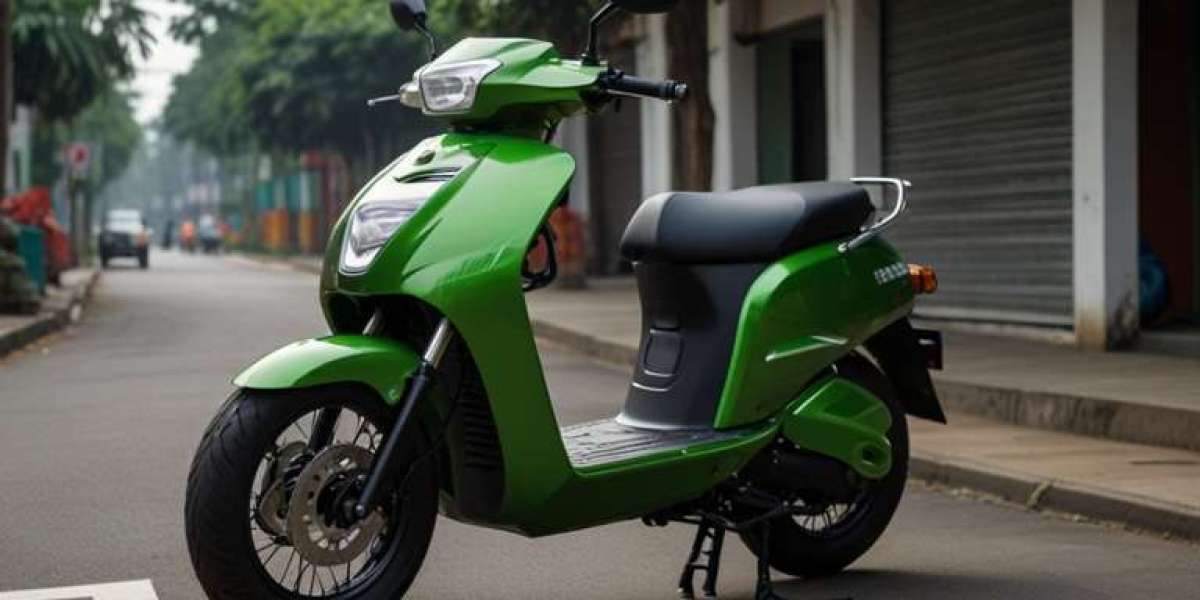The Indonesia electric two-wheeler market is undergoing a remarkable transformation. What once began as a niche for early adopters is now emerging as a major segment within the broader mobility ecosystem. Valued at approximately USD 350 million in 2024, it is projected to surge to around USD 1.85 billion by 2030, registering an astonishing compound annual growth rate (CAGR) of 32.3%.
This electric mobility revolution is being powered by converging macroeconomic pressures—rising fuel prices, deteriorating air quality, and increasing consumer environmental consciousness. Indonesia offers a compelling case study: sprawling megacities like Jakarta, rapid urbanization, nascent yet expanding charging infrastructure, and a robust regulatory push toward green transportation. Combined, these forces are driving electric two-wheelers from curiosity to mainstream.
Download Free Sample Report: https://www.techsciresearch.com/sample-report.aspx?cid=4522
Market Backdrop: From Tradition to Transformation
Indonesia has long been one of the world’s largest two-wheeler markets—home to over 130 million motorcycles, a figure only surpassed by India and China. These vehicles fuel the nation’s daily mobility needs, powering commutes, goods transport, and economic opportunity.
But the status quo is shifting:
Rising commuter costs: With fuel subsidies tapering and global oil prices climbing, Indonesian riders are increasingly drawn to affordable electric alternatives.
Pollution crisis: Cities such as Jakarta, Surabaya, and Bandung endure moderate to severe air pollution, making electric vehicles a political and consumer priority.
Electrification policies: In 2023, the government announced ~USD 455 million in subsidies to promote electric two-wheeler purchases and conversions—signaling serious public-sector commitment.
Battery evolution: Lithium‑ion batteries are becoming lighter, cheaper, and with greater range—unlocking electric vehicle adoption.
This trifecta is rewriting the energy equation for mobility in Indonesia.
Drivers Fueling Market Growth
1. Fuel Cost & Financial Appeal
As subsidies phase out, commuters are feeling the pinch. Electric options offer dramatic per-kilometer savings, making them an attractive long-term investment—even if upfront prices are still higher.
2. Environmental Concerns
More Indonesians now link vehicle emissions with unacceptable air quality. Electric two-wheelers, offering zero tailpipe emissions, align well with emerging environmental consciousness.
3. Policy & Subsidies
Government incentives ranging from direct purchase subsidies to tax waivers, and regulations supporting local EV assembly are providing a favorable entry point for OEMs.
4. Urban Mobility Needs
Cities like Jakarta see regular gridlock, which disproportionately penalizes gas-powered bikes. Quiet electric two-wheelers are easier to use in restricted areas and are naturally suited for stop‑start urban riding.
5. Rise of EV Ecosystem
Public-private partnerships are building charging stations and battery-swap networks, reducing the anxiety associated with battery range and charging times.
6. Expansion of Shared Mobility
Events like PEVS‑2025 highlight the growing display of ride-share and rental e-scooter services—indicating the shift isn’t limited to private ownership.
7. Startups & OEM Collaboration
Players like Zero Motorcycles, Segway, and Yadea are entering the fray, frequently partnering with local distributors or setting up JVs to leverage existing supply chains.
Emerging Trends & Technological Shifts
A. Swappable vs. Non-Swappable Batteries
Swappable: Ideal for riders without access to charging at home—battery exchange stations are emerging across Jakarta.
Non‑swappable: Integrated batteries offer better design ergonomics for longer-range models and are suited for residential charging setups.
B. Smart Battery & Telematics Suites
Next-gen e-scooters come equipped with smartphone monitoring (state-of-charge, GPS, maintenance alerts), raising the bar on user experience and data-driven maintenance.
C. Lightweight Urban Designs
New entrants focus on urban simplicity—lightweight alloys, modular designs, ease-of-replacement components—all built for emerging megacities.
D. Charging Infrastructure Surge
Home-based chargers: Standard among middle-income neighborhoods.
Public swap stations: Providers like Oyika have deployed hundreds of swapping units around Jakarta’s Greater metropolitan area.
Fast-charging plans: Companies like VinFast have proposed installing around 100,000 chargers across Indonesia in partnership with state-owned utility PLN.
E. Value Innovation
Battery costs are dropping (especially Li-ion), keeping vehicle prices within reach. Firms are introducing powertrain leasing models and battery-as-a-service (BaaS) subscriptions to cut initial investment.
F. Shared Micromobility Platforms
Shared e-scooters are emerging in metro transit zones, universities, and corporate campuses—anode by ventures similar to Gogoro’s charging models in Jakarta.
Segmentation Overview
By Vehicle Type
E‑Scooters/Mopeds: The most popular urban option, especially among female and first-time EV buyers.
E‑Motorcycles: Suited for riders seeking higher speed and range, including commuters and small-business users.
By Battery Type
Swappable: Favored for urban convenience; community-focused swap station rollout ahead.
Non‑Swappable: Common for mid-range daily commuters and delivery fleets.
By Range
< 50 km: City commuters and student use.
50–100 km: Daily commuters without home charging.
101–150 km and >150 km: Rural or intercity riders; still emerging segments.
By Region
Western Indonesia: Urban demand, infrastructure density.
Java Island: The heartland of adoption—focus on policy, investment, and logistics.
Eastern Islands: Frontline for future growth; moderate infrastructure growth in progress.
Competitive Analysis
Major Players & Roles
PT Astra Honda Motor & Yamaha Indonesia: Retrofitting combustion engine giants, leveraging brand loyalty and dealership depth.
Hero MotoCorp, TVS Indonesia, Viar: Emerging domestic-focused players with strong dealer networks.
Zero Motorcycles & Segway: Premium brands offering performance-tier plug-in hybrids or high-spec scooters.
Yadea, TAILG, Gogoro: Strategy-driven brands with local assembly and swapping infrastructure focus.
Strategies in Motion
Swappable battery partnerships: Yas with local transporter associations.
Financing & Leasing Solutions: OEMs collaborate with fintech startups to lower barrier to ownership.
Localized assembly plants: Reducing costs and enabling faster response to policy changes.
Technology alliances: Subscription telematics, smartphone integration, OTA software updates for user convenience and fleet tracking.
Future Outlook
By 2030, the electric two-wheeler market in Indonesia is on track to reach USD 1.85 billion, driven by:
Quality infrastructure: Charging & swapping stations in every urban node.
Vehicle affordability: Battery leasing/subscription making EVs financially comparable to ICE models.
OEM innovation: Fully localized swappable battery models and smart-service features.
Regulatory momentum: Green energy push via subsidy continuation and local sourcing.
Shared economy integrations: City fleets & last-mile services opting for EVs to reduce operating costs.
Challenges Ahead:
Charging equity in semi-rural zones.
Educating consumers on battery life and range optimization.
Balancing upfront costs with vehicle longevity and resale value.
Electric two-wheelers are expected to dominate new vehicle sales by 2028–2030; traditional combustion models will remain but diminish in share.
10 Key Benefits of the Research Report
Accurate Market Forecast: Data-backed projections through 2030.
Patent Segmentation Insights: Vehicle type, range, region, battery type.
Competitive Landscape Overview: Profiles of top 10+ manufacturers and newcomers.
Policy Impact Analysis: Effects of subsidies, emissions rules, infrastructure plans.
Infrastructure Strategy Guide: Insights into charging and swapping networks.
Consumer Behavior Revealed: How riders in cities vs. outskirts make EV choices.
Innovation Tracker: Technological shifts across batteries, telematics, swappable models.
Investment Opportunity Map: Where and how to invest in OEMs, platforms, utility infrastructure.
Risk & Challenge Mitigation: Tactics for infrastructure and awareness gaps.
Tailored Action Playbook: OEM growth strategies, channel expansions, and product mixes.
Conclusion
Indonesia is at the cusp of an electric two-wheeler transformation. What started as a premium urban trend is fast becoming a foundational element of national mobility. Rising costs, health concerns, and green ambition are reshaping rider behavior, while battery innovation, infrastructure extension, and OEM evolution are readying the country for this shift.
By 2030, electric two-wheelers will likely account for more than half of new sales—especially in urban corridors. OEMs who invest now in eco-innovation, smart user engagement, and charging/swapping infrastructure will ride the future wave.
Contact Us-
Mr. Ken Mathews
708 Third Avenue,
Manhattan, NY,
New York – 10017
Tel: +1-646-360-1656
Email: [email protected]
Website: www.techsciresearch.com



